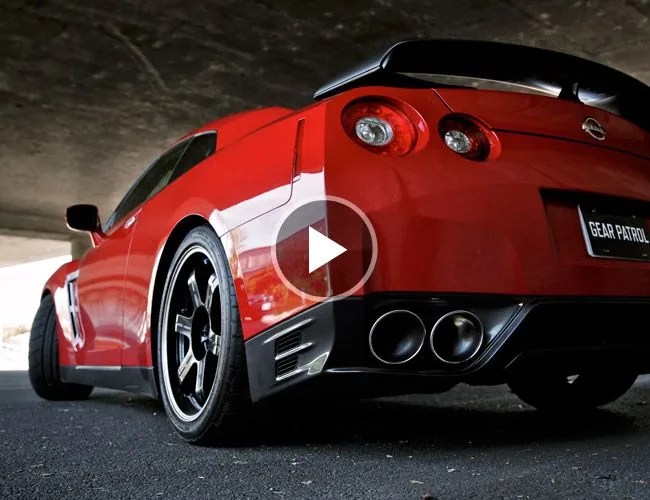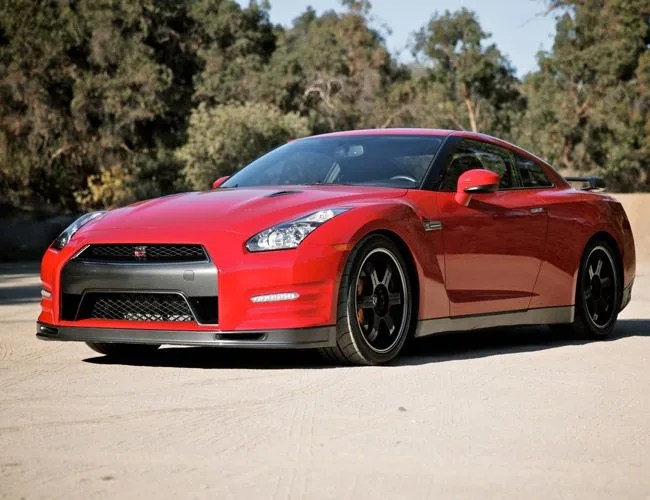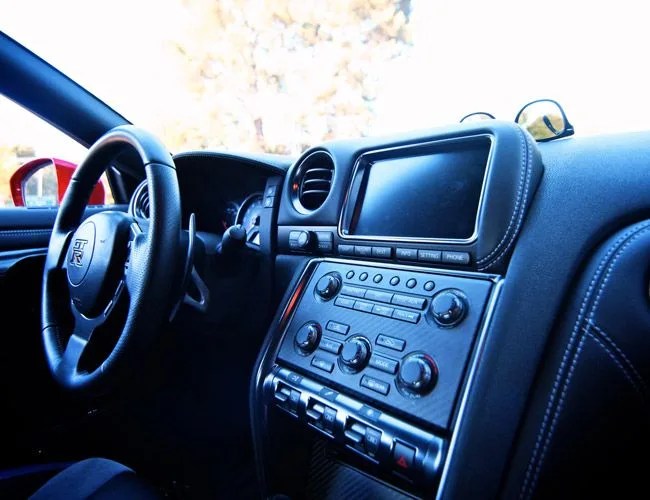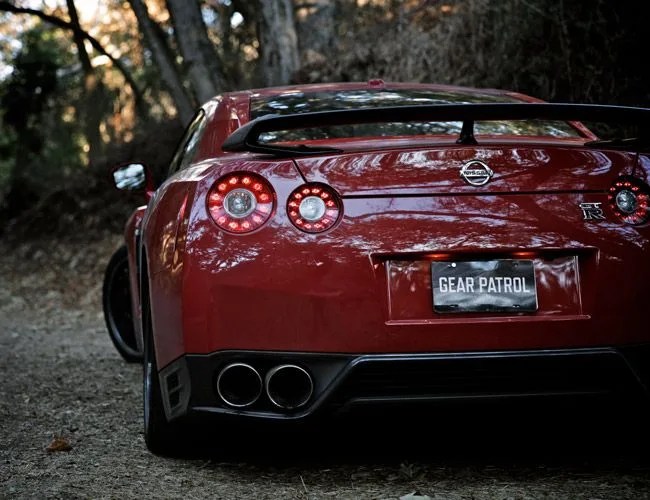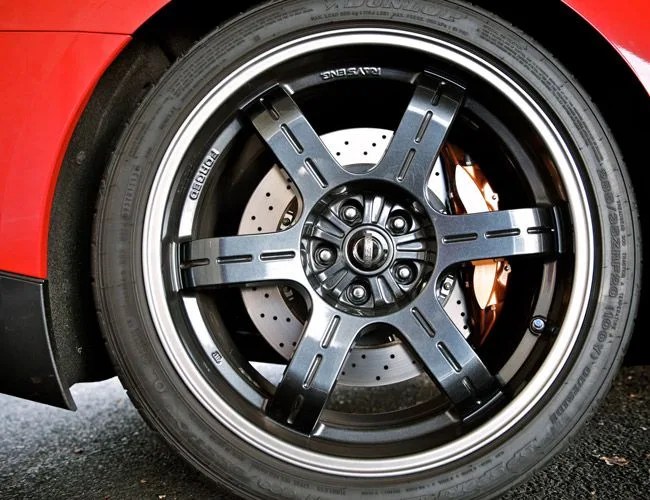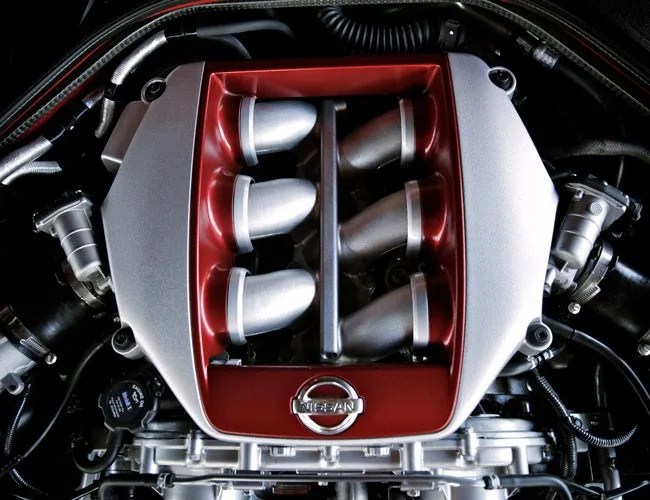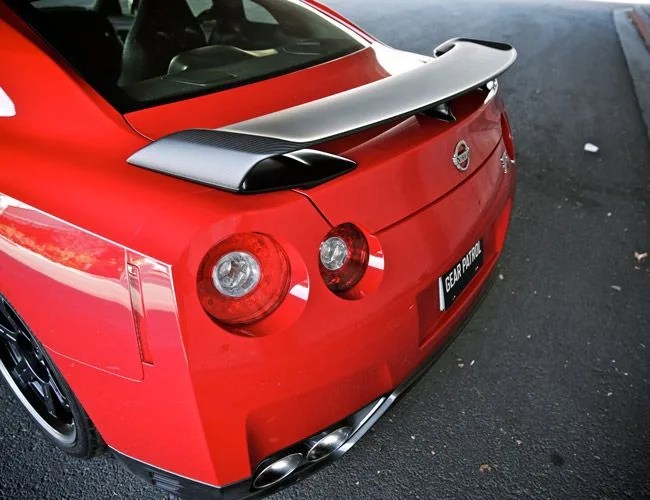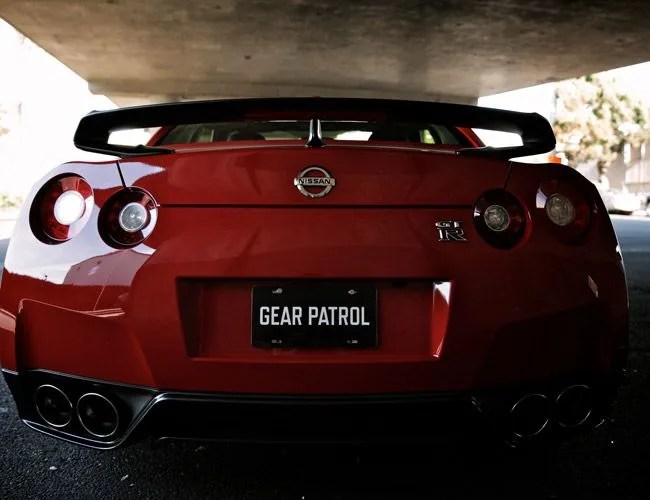With one of the highest thrill-to-dollar ratios of any production car on the planet, the only way to make the Nissan GT-R more monstrous would be to remove the rear “seats”, stiffen the suspension with Nurburgring-tuned Bilstein Damptronic gas pressure shocks, add extra vents to cool the brakes, give it 20-inch Rays wheels and call it the Track Edition. To make it even more enticing to the crazed GT-R fanbase Nissan only made 150 for the States; luckily, we didn’t have to call in any favors or cash in our Bitcoins to get our hands on the 2014 Nissan GT-R Track Edition ($115,710), which serves dual duties as a sports car and a missile.
More Supercar Brilliance: Audi R8 V10 Plus | Lamborghini Aventador | Ferrari FF
If you know anything about Japanese performance cars, you need no introduction to the GT-R name. As the performance version of the popular Japanese Nissan Skyline, the Skyline GT-R was sold in Japan from 1969 to 1973. After a sixteen-year hiatus, the GT-R name was brought back in the 1989 R32 model, a car that shortly reached iconic status after winning practically every race it entered in Japanese motorsports. It wasn’t just its dominance on the track that captivated auto enthusiasts, adrenaline junkies and Fast & Furious fans: with its long and lean body, fat rear fenders and tall, fixed rear wing, it looked like no other performance car in Europe or the U.S. Though sold in Japan, Australia, New Zealand and even the UK, the R32 couldn’t be purchased in America (though likely there were “creative” import methods).
The first GT-R sold in America was based on two concept cars from 2001 and 2005. The first was a design exercise to show what a modern GT-R could look like; really, only the general body shape and the long tapering headlights carried over to the 2005 concept car, which served as Nissan’s main inspiration for the 2007 production model that debuted at the Tokyo Motor Show without the original Skyline nomenclature. Nissan sold the first GT-R on U.S. soil in 2008 to a lucky recipient in Los Angeles. How sweet it was, then, to be in the same place with our own affordable (base price, $99,590) Japanese rocket ship.
Nissan has created a unique flavor of high performance that crushes cars with three times its price tag.
Though the current GT-R isn’t quite as handsome as the R32, the car still looks all business. Long yet muscular and very much Japanese, it’s truly unique for a high-performance car — something not easily done these days. The exterior of the Track Edition isn’t much different from its non-track named brethern, the Premium and Black Edition models, but it’s got upgrades where it counts. This model gets its own front spoiler along with tasty carbon-fiber air intakes; the suspension is tuned for better handling on the track; and the upgraded Bilstein shocks are coupled with higher spring rates. The big carbon fiber spoiler from the Black Edition shows up here, too, and we’re not complaining, because it’s both beautiful and downforce inducing.
As capable as the GT-R Track Edition is, it is a bit lacking in the interior digs department. There are nice carbon fiber accents throughout, but the grippy seat material is atrocious — the suede and leather feel a bit low rent, cheapening the car in a way it doesn’t deserve. The rest of the interior is solid but not necessarily worthy of a car that costs six figures, filled with buttons and switches to change suspension and traction settings, as well as performance gauges to track your times, speed and gs. Still, it’s all in line with the purpose of the car, and the Track Edition clearly isn’t striving to impress the way a Bugatti Veyron would — it’s also a fraction of that car’s price. The trunk is surprisingly large for something that gets supercar performance; the rear seats are gone, and, no, the weight drop isn’t that significant. But the quilted area for helmet storage is something we’d want any day, in lieu of bringing our short friends.
